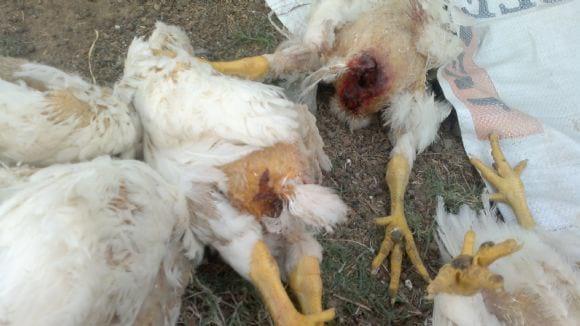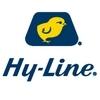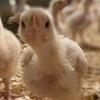Explore all the information on
Poultry behavior
Knowledge of the behaviour of the stock and the application of that knowledge in the care of the stock plays an important part in the maximisation of production efficiency of a poultry production enterprise. In addition, the management of the domestic fowl has received considerable attention over recent years from the community, particularly animal liberation groups, because of the way that commercial poultry management systems have intensified. As a consequence, the study of poultry behaviour is important to the unit manager, not only to ensure that the welfare of the birds and production efficiency are maintained but also to minimise the influence of what is often uninformed debate. Behaviour is the way that animals respond to the different stimuli they encounter in their environment. The stimuli may be from other birds, their environment, people or any other thing or occurrence. Aggression and feather pecking or plucking are the two most common behavioral problems in chickens.
Vent pecking is seen in 30 day old broiler birds in the farm refer as Cannibalism. Cannibalistic behavior performed by poultry is the pecking, tearing and consuming of skin, tissues, the case i met with birds have started pecking cloaca l region in some case intestine it is to harsh that intestinal loop drop outside through wound. However, this problem has been a consistent problem in layers but can also be encountered in broilers as i do. The I.B.D has been...
Comments : 0
Recommendations: 1
I have 4700 layer birds of 30 weeks there are daily 5 to 6 mortality occur due to vent picking in laying time any one who treat this problem, thanks. ...
Comments : 7
Recommendations: 0
1. Introduction Infectious laryngotracheitis (ILT) is an economically concerning disease in the poultry industry. This highly contagious disease is caused by Gallidalphaherpes virus type1 (GaHV 1), commonly known as infectious laryngotracheitis virus (ILTV) [1]. ILT is characterized by severe dyspnea, cough, and rales, while the sub-acute form is characterized by nasal and ocular discharge, tracheitis, conjunctivitis, and mild rales [2]. Chickens of all ages are prone to...
Comments : 0
Recommendations: 0
1. Introduction The laying hen industry in the United States consists of approximately 330–340 million laying hens [1] that must first go through the growing phase known as the pullet phase. The pullet phase accounts for approximately 25% of a laying hen’s lifetime [2] and encompasses approximately 0–16 weeks of age (WOA). During this time, the pullet reaches sexual maturity and grows to its full skeletal capacity. Early experiences during the pullet phase,...
Comments : 0
Recommendations: 0
1. Introduction Ensuring efficient chicken farming is crucial, including prioritizing their welfare and health in agricultural production [1]. Individual variability in behavior enhances our understanding of how housing can be utilized differently by chickens. This may be due to individual preferences for certain types of equipment or impediments to access caused by dominant individuals [2]. This variability underscores the importance of improving accurate identification systems for...
Comments : 0
Recommendations: 0
Damaging behaviors in poultry include feather pecking, vent pecking, and toe pecking. While feather and vent pecking are well-known welfare problems in poultry that have received significant attention from researchers and farmers, toe pecking remains relatively unknown. Therefore, this article aims to shed...
Comments : 0
Recommendations: 0


DL-methionine can replace methionine-hydroxy anlalog products in a ratio of 65:100 in laying hen fee
Suggested link
I. INTRODUCTION Brooding chicks with maternal care can improve the welfare of chicks; specifically, by improving prosocial behavior and reducing feather pecking (Edgar et al., 2016). Yet providing chicks mother hens in industry is impractical and a biosecurity risk. Artificial components of maternal care may provide some benefits to chicks and improve welfare. Indeed, there is some evidence that lighting that mimics the maternal environment, synthetic maternal olfactory cues and...
Comments : 0
Recommendations: 0
Frequent visits to an outdoor range has been associated with good meat chicken welfare but not all chickens will access the outdoor range when provided with the opportunity (Taylor et al., 2018). On average, it takes an average of three to four days for most meat chickens in commercial conditions to access the range after the pop-holes first open (Taylor et al., 2017a). Yet chickens that access the range soon after the pop-holes first open, range more frequently throughout their lives...
Comments : 0
Recommendations: 0


Lost in the Market Uncertainty Caused by the Outbreak
Suggested link
Introduction Locomotory activity is strongly associated with broiler chicken welfare; many behavioral patterns that depend on locomotion, such as exploration, seeking food, water, shelter, and escaping predators, are negatively affected by the poor walking ability in fast-growing broiler chickens [1]. Rapid muscle growth and exacerbated development of the Pectoralis major muscle in fast-growing broiler chickens change the chickens’ center of gravity, altering the...
Comments : 0
Recommendations: 1
Dr. Leonie Jacobs (Virginia Tech / Poultry Extension Collaborative) offers insights on poultry welfare and its potential for the future of production systems -and the industry as a whole-, during this Engormix interview....
Comments : 1
Recommendations: 1
Introduction The United States (US) has three main broiler chicken production systems which mandate that birds have outdoor access. The first is certified organic production overseen by the United States Department of Agriculture (USDA), which requires that birds have access to the outdoors, with shade, shelter, exercise areas, fresh air, direct sunlight, and protection from predators year-round [1]. The second is free-range poultry production, overseen by the USDA, where...
Comments : 0
Recommendations: 0
Commercial egg laying operations can benefit from more effective and economical ways to depopulate flocks at the end-of-lay while improving worker performance and maintaining or improving animal welfare. Recent on-farm research in Switzerland applied portable blue light units and specialized crate carts, seeking to improve depopulation during catching, carrying, and crating without changes to flock housing or other infrastructure. However, neither the blue light nor the cart reduced layer...
Comments : 0
Recommendations: 0
Prafulla Regmi (University of Georgia) shares his research on the interaction and movement of birds in a cage-free aviary system and explains how this technology could be implemented, in this Engormix interview during IPPE 2024 in Atlanta, USA....
Comments : 0
Recommendations: 2
I. INTRODUCTION Determination of range usage by hens can be difficult for researchers and free-range egg farmers, particularly usage on the outer sections of the range (i.e., > 50 m from the hen shed). Live counts only give a snapshot of numbers of hens on the range at a defined time point and do not show the frequency of range usage. Camera traps, also referred to as trail cameras and wildlife cameras, are relatively cheap and useful tools that could produce valuable information...
Comments : 0
Recommendations: 0
I. INTRODUCTION The welfare of all farmed livestock is of importance to the consuming public. Australian consumers especially have some concerns about welfare within more intensive animal production systems, such as commercial egg farms (Rachel et al., 2017). Most consider cage-free and free-range production systems to be more `natural` and associate this with `good` animal welfare (Buddle et al., 2021). Commercial egg farms experiencing smothering and mortality events as a result of...
Comments : 0
Recommendations: 0
Quantification of range use in commercial meat chicken flocks is desirable so that farmers can objectively assess meaningful range access, including number of chickens using the range and how far chickens roam from the shed. Currently there is no cost-effective technology for quantifying range use in commercial conditions, and farm staff perform assessments based on visual inspection. A proof-of-concept machine vision system was developed for automated range use assessment, using simple and...
Comments : 0
Recommendations: 0
I. Introduction Early life experiences play an important role in the behavioural development of laying hens (Janczak and Riber 2015; Nicol 2015). Environmental differences in rearing systems have been shown to have an impact on behavioural problems such as feather pecking and cannibalism during adulthood (de Haas et al. 2014; Riber and Guzman 2017). In addition, fearfulness early in life has been shown to correspond to increased stress response in adulthood (de Haas et al. 2012). A...
Comments : 0
Recommendations: 0
I. Introduction In Australia, 95% of the population are concerned about animal welfare with 91% desiring better ways to monitor and improve animal welfare (National pest & disease outbreaks, 2018). There is increased understanding and focus on animals’ sentience and the need to ensure farm animals have ‘lives worth living’. This applies to the Australian egg industry where research shows the community believes that hens are entitled to positive and rewarding...
Comments : 0
Recommendations: 0
More recently, probiotics have attracted considerable attention in subsiding oxidative damage caused by heat stress in poultry. Numerous researchers have reported the potential benefits of probiotics in improving gut morphology and integrity in heat-stressed birds. Bacillus is of industrial importance several reasons, including its excellent safety record, rapid growth rate resulting in short fermentation cycles, and ability to secrete proteins into the extracellular medium....
Comments : 1
Recommendations: 1
In cage-free housing, multi-tiered aviary structures are often used (pictured above), where key resources (i.e., feed, water, nests, perches) are available on elevated platforms called tiers, and litter substrate is available on the ground floor for dustbathing and foraging. Hens move vertically and horizontally...
Comments : 0
Recommendations: 0



.jpg&w=3840&q=75)



.jpg&w=3840&q=75)








.jpg&w=3840&q=75)











